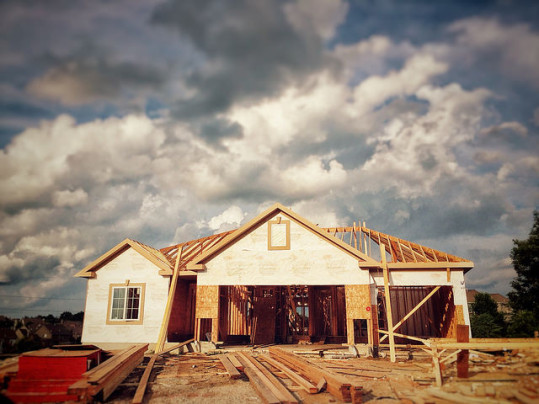Buying a home is a commitment. Part of that commitment is financial; the other part is time. In other words, if you’re buying a home, you’re likely planning on staying there a while. But how long do buyers typically stay in the home they buy? Well, according to ATTOM Data Solutions’ Q2 2019 U.S. Home Sales Report, homeownership tenure is increasing and recently reached a new peak. In fact, the average number of years home sellers lived in their home before selling hit 8.09 during the second quarter. That’s up 3 percent from the previous quarter and 4 percent from the same time last year. And, in some areas, it was even longer. In fact, Tucson, Portland, Phoenix, and Tampa-St. Petersburg all had homeownership tenures longer than the national average. In San Francisco, the average amount of time sellers lived in their homes was 10.26 years. There are a number of reasons that Americans are living in their homes longer than they once did. But whatever their reasons, homeowners have benefited from staying put. That’s because, they’ve built up a significant amount of equity over the years. For example, ATTOM’s report shows the average home price gain since purchase is now $67,500, which is almost $10,000 more than the previous quarter. More here.
Archive for July 2019
Inventory, Sales Expected To Improve This Year
If you’re thinking about buying a house, you’re probably focused on finding something that fits your lifestyle but doesn’t blow a hole in your budget. In short, you want to find the best house for your money. In a market where there are too few homes for sale, though, this can be difficult. That’s because a lack of homes for sale means more competition, bidding wars, and fewer choices. Fortunately, though many markets are suffering from a lack of inventory, Fannie Mae’s Economic and Strategic Research Group sees change on the horizon. According to their most recent housing market forecast, they expect new and existing home sales to improve through the rest of the year due to increasing inventory. Doug Duncan, Fannie Mae’s vice president and chief economist, says too few homes for sale has been the main factor holding sales back. “While home price appreciation has largely moderated – particularly compared to the recent past – and demand for modestly priced homes has proven strong and resilient, the lack of affordable inventory continues to cap sales and limit the potential pool of would-be homeowners,” Duncan said. But as inventory improves and price increases continue to slow, home buyers will have an easier time finding a house that fits their needs and budget. More here.
Home Buyer Interest Higher Than Last Year
Despite lingering affordability concerns, Americans remain interested in buying a home. In fact, according to the Mortgage Bankers Association’s Weekly Applications Survey, demand for loans to buy homes is now 7 percent higher than at the same time last year. That means, potential home shoppers still see buying opportunities even while for-sale inventory remains low and home prices continue to rise. Joel Kan, MBA’s associate vice president of economic and industry forecasting, credits some of that interest to mortgage rates that remain well below this year’s average. And though rates did increase last week – rising across all loan categories, including 30-year fixed-rate loans with both conforming and jumbo balances, loans backed by the Federal Housing Administration, and 15-year fixed-rate loans – their recent downward trend has kept them well below where they were even a few months ago. That has helped affordability and boosted buyer interest. The MBA’s weekly survey has been conducted since 1990 and covers 75 percent of all retail residential mortgage applications. More here.
Builders Optimistic Despite Market Challenges
The new home market isn’t only important to new home buyers. After all, the number of homes being built plays a part in meeting buyer demand, moderating competition, and keeping prices in check. In other words, if the market for newly-built homes isn’t doing well, there’s a good chance the overall housing market isn’t either. That’s why the National Association of Home Builders’ Housing Market Index is a closely followed indicator. The index measures home builder confidence on a scale where any number above 50 indicates more builders view conditions as good than poor. In July, the index scored a 65, with the individual components measuring sales conditions, traffic, and expectations for the next six months all up from the month before. Greg Ugalde, NAHB’s chairman, says builders remain optimistic, despite some challenges. “Builders report solid demand for single-family homes,” Ugalde said. “However, they continue to grapple with labor shortages, a dearth of buildable lots, and rising construction costs that are making it increasingly challenging to build homes at affordable price points relative to buyer incomes.” More here.
How Long Does It Take To Close A Loan?
If you’ve never been through the buying process before, you might think you get the keys to your new house right after having your offer accepted. After all, you’ve been approved to borrow the money and the home seller has agreed to sell you their house. So, what could be the holdup? Well, there are a number of things. First off, there’s the paperwork that needs to be done. The details of the home’s sale have to be documented before all of the parties involved can be assured that the necessary requirements have been met. Additionally, the home needs to be inspected and appraised to make sure that the house is valued correctly and has no hidden issues. Put simply, your finances, the home, and the specifics of the transaction all have to be thoroughly verified before the loan can be closed. This, of course, takes time. The good news is the amount of time it takes has been declining. In fact, according to one recent analysis, average closing times have fallen from 74 days to just 38 days since 2017. Most of that improvement is due to the digitization of the process. But some other factors that affect closing time are credit scores and the amount of the loan. Higher credit scores and bigger loans are associated with quicker closing times. More here.
Lending Standards Get Looser In June
There are many steps along the way to buying a house. But qualifying for a mortgage is where it all begins. Until you’ve been approved to borrow, you can’t really start looking for a house and you certainly can’t make an offer on one. That’s why the most recent Mortgage Credit Availability Index from the Mortgage Bankers Association is good news for hopeful home buyers. According to the index – which measures whether lending standards are tightening or loosening – credit became more available in June. That means, home buyers should have an easier time getting approved for a loan. Joel Kan, MBA’s associate vice president of economic and industry forecasting, says credit availability has been increasing this year. “Credit availability has generally increased in 2019 as lenders have worked to meet affordability challenges,” Kan said. “Because mortgage rates have recently fallen and home price growth has decelerated in many markets, credit availability may stabilize at its current levels.” More here.
Mortgage Payments Affordable For High School Grads
The cost of buying a house gets a lot of attention these days. After all, home prices have been rising for years now and there’s plenty of reporting on the lack of available for-sale inventory. So it’d be easy to get the impression that homeownership is now out of reach for most Americans. But, according to one recent study that looked at affordability based on household income and education level, mortgage payments are actually still affordable in the majority of cities. In fact, the typical mortgage payment is within reach for households where at least one person has a high school diploma in 36 of the nation’s 50 largest metropolitan areas. But though that seems to buck the conventional wisdom about affordability conditions these days, it doesn’t take into account the challenge of coming up with a suitable down payment. And, since nearly 50 percent of first-time home buyers use savings to cover the upfront costs of buying a home, that can be a struggle for many buyers – especially those doings so for the first time. Still, the fact that the typical mortgage payment remains within reach in the majority of markets is encouraging news for anyone thinking of buying a home in the near future. More here.







